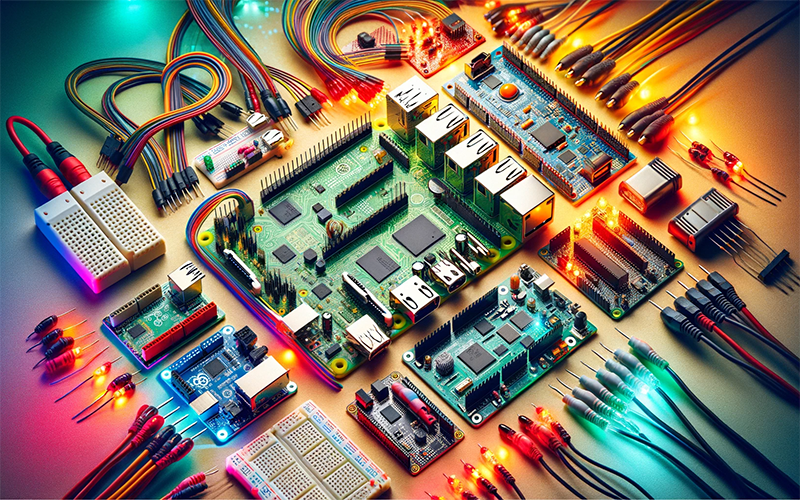You’ve heard something about miniature computers that fit in the palm of your hand and can be used to create amazing things. You desire to try your hand at this field, and your head has already begun forming a crazy project. But where to start? And what kind of microcomputer should a beginner who has never dealt with such devices choose? Today’s article will help you to understand it all.
Below, you will find basic information about microcomputers in the form of small, frequently asked questions made up of the questions that most concern beginners.
What Is A Single-Board Computer?
A single-board computer, or SBC, is a miniature electronic computing device with all components assembled on a single printed circuit board. Such a device does not require additional controllers for operation – it is entirely self-sufficient. At the same time, the dimensions of a single-board computer are not much larger than the size of a bank card. If you choose a rock computer, it will become your favorite to solve many tasks.
Why Do We Need SBC?
Microcomputers allow you to solve many applied tasks. On the basis of SBC, you can create a “smart home” system with your own hands, construct a retro console, make an advanced router for your home or office, raise a multimedia or web server, and much more. Compared to ready-made solutions, projects based on single-board computers are much cheaper. As a bonus, the assembled system has almost limitless possibilities for customization and scaling. The strategic utilization of these computers enhances efficiency, flexibility, and cost-effectiveness, even in business operations.
Is A Microcomputer For Me If I’m Not An Engineer Or A Programmer?
To begin with, you can easily find a lot of ready-made programs and even specialized distributions of operating systems for SBC, “sharpened” for specific tasks. Of course, you will have to understand how the necessary software works and learn how to customize it, but it is optional to know how to program.
As for the connection of additional modules, for these purposes, the board has standard ports as well as a universal GPIO (General-Purpose Input/Output) interface, which can be easily configured for any task and is used to connect light sensors, temperature sensors, sound sensors, LED indicators and even more complex components like 3G/4G modems to the microcomputer. You can always purchase the necessary expansion board if you need a specific port.
The assembly of a functional system itself is no more complicated than working with a child’s construction kit; it does not require soldering and other complex manipulations. In addition, you can find many auxiliary parts (cases, heat sinks, coolers, antennas, etc.) for microcomputers on sale, so you do not have to master 3D printing or suffer in vain attempts to attach incompatible components to the SBC.
The Bottom Line
The realm of single-board computers opens up a magical world of possibilities for beginners eager to embark on creative and practical projects. Aspiring enthusiasts may initially feel overwhelmed, but today’s article provides a solid starting point by answering critical questions about these miniature electronic wonders.
Understanding the basics of single-board computers (SBCs) reveals their self-sufficiency, compact design, and limitless potential for practical applications. Whether constructing a “smart home” system, developing a retro console, or setting up a customized router, SBC projects offer cost-effective alternatives to ready-made solutions and unparalleled customization options.
Dispelling the notion that SBCs are exclusively for engineers or programmers, the accessibility of ready-made programs and specialized operating system distributions caters to a broader audience. Connecting additional modules becomes a straightforward task with standard ports and a versatile GPIO interface, allowing users to link various sensors, indicators, and complex components without intricate programming knowledge.
Assembling a functional system with an SBC mirrors the simplicity of a child’s construction kit, eliminating the need for soldering or complex manipulations. The availability of auxiliary parts in the market further streamlines the process, ensuring enthusiasts can easily enhance their projects with components like cases, heat sinks, coolers, and antennas. With this foundation, newcomers can confidently venture into the exciting world of single-board computers, turning their innovative ideas into tangible and rewarding creations.

